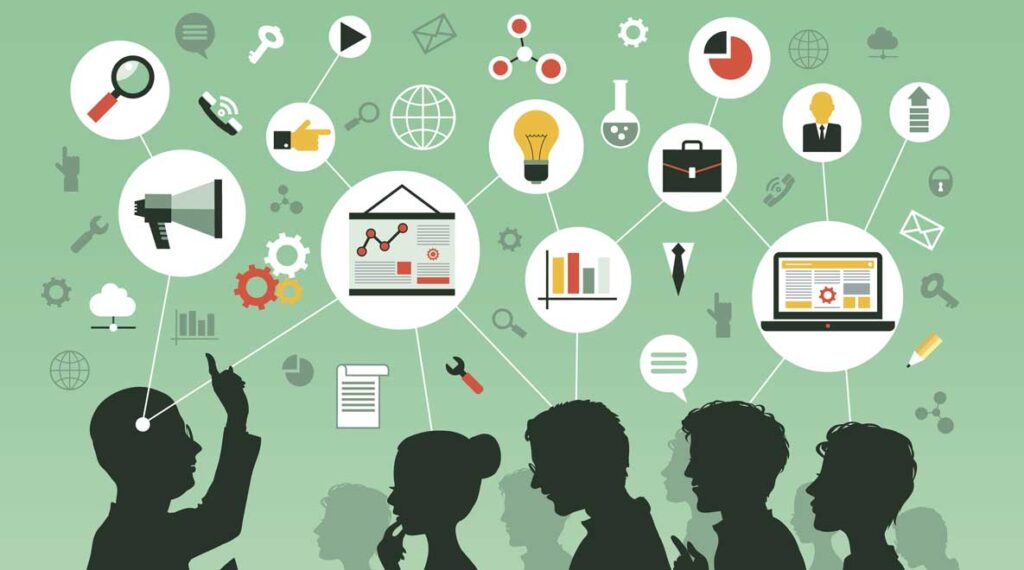Disruptors or Leading the Charge to Grow and Improve Jobs?
After 200 plus workshops, specific themes are emerging in how employee exposure to learning and continuous improvement content is changing overall performance.
- US-based companies are uniquely positioned to grow a larger and more capable workforce while funding investments in productivity, improving capital investments.
- Humans are underrated.
- Combining or replacing legacy information and training resources with resources delivered at the point of task execution accelerates retention and increases quality.

I’ll acknowledge upfront that we live in an increasingly complex and at times strife filled world. Out of the chaos of 24-hour news cycles that pander to extremes on every topic, a couple of clearly positive themes have emerged over the last few months for us at SAI. So positive in fact that we need to accelerate the impact across our economy.
I’m not much on labels, but we’re alternately identified at SAI as disruptors in the software world and as the guys that are saving and improving jobs in the manufacturing, banking, healthcare and retail marketplace. We simply believe that there are faster, less expensive ways to create work environments where every employee has a shot at learning, improving and earning more. Maybe both labels fit.
SAI has focused on delivering superior value to our customers with hungry, humble and smart team members since 1993 (how many 25-year-old technology companies are there?). Our software business has exploded over the last couple of years as we’ve lasered in on the idea of enabling our customer’s employees to continuously improve their capabilities.
Lots of feedback across hundreds of workshops has given us a crystal clear picture of how the most successful companies (like our customers at Anheuser Busch Inbev, Truist, and Mohawk) are creating environments where their employees can more quickly learn, improve their capabilities and value, and move ahead more quickly into better jobs.
Change is Necessary Now
The need for urgent change is at an all time high. US based companies are uniquely positioned to grow a larger and more capable workforce while funding large investments in productivity improving capital investments.
The Reshoring Institute reported this week that we “reshored” 170k manufacturing jobs to the US in 2017 and expect another large improvement in 2018. The Wall Street Journal reported yesterday that manufacturing job openings and turn over are at their highest rates since 2006. The turnover rate in manufacturing employees 45 and older is also at a peak.
Never the master of understatement, Elon Musk weighed in with a tweet on Friday that sums up where we’ve landed in the automation vs jobs debate: “Excessive automation at Tesla was a mistake. To be precise, my mistake. Humans are underrated.”
So how do we move forward in such a stormy sea of change? We could all stop what we’re doing and try to build the ultimate course curriculum, the best analytics dashboard or the end all training program. Past experience indicates that path is fraught with risk and expense and the results are difficult to measure.
Building A Continuous Improvement Culture
Our customers have shared with us over the last two years that their employees are all different, some are visual learners, some are auditory learners and some are kinesthetic learners. Fortunately, their brains are fairly similar.
Humans use a combination of long term, intermediate and short term memory to accomplish a wide variety of tasks (check out renowned neurologist David Sousa’s book “How the Brain Learns”). We generally discard information that our brains dismiss as not immediately useful (one time phone numbers?). We tend to store information in our longer term memory if it’s associated with something that has a deeper meaning or an emotional correlation (that’s a lion and I may be his dinner).
All of us have consumed lengthy web-based training, classroom training and job aids of various levels of quality. Most of it blurs together into an indistinct mass if we retain the information at all. It’s often impossible to retrieve needed information from long form content that was delivered weeks or months ago. Combining or replacing these legacy content types with information delivered at the time of task execution appears to accelerate retention and increase the task execution quality.
We’re learning that creating an environment where every employee can continuously improve their skills (without huge software costs and labor opportunity costs) comes down to putting content in the hands of every employee on any device so that they can access it when they need it. Linking content consumption with task execution also drives team members to continuously improve the content as opposed to waiting months or years for updates.
Sharing the Spoils
We’re learning more every month about what’s working and what’s not as we work through an expanding set of workshops and use cases with our customers on Acadia projects. Whether Acadia is a good fit for you and your organization or not, we’re happy to share what we’re learning if it helps create more and better jobs for our friends, neighbors and community members. Reach out if you want to compare notes or learn more about what we’re up to.
Ready to crush your goals?
"*" indicates required fields



